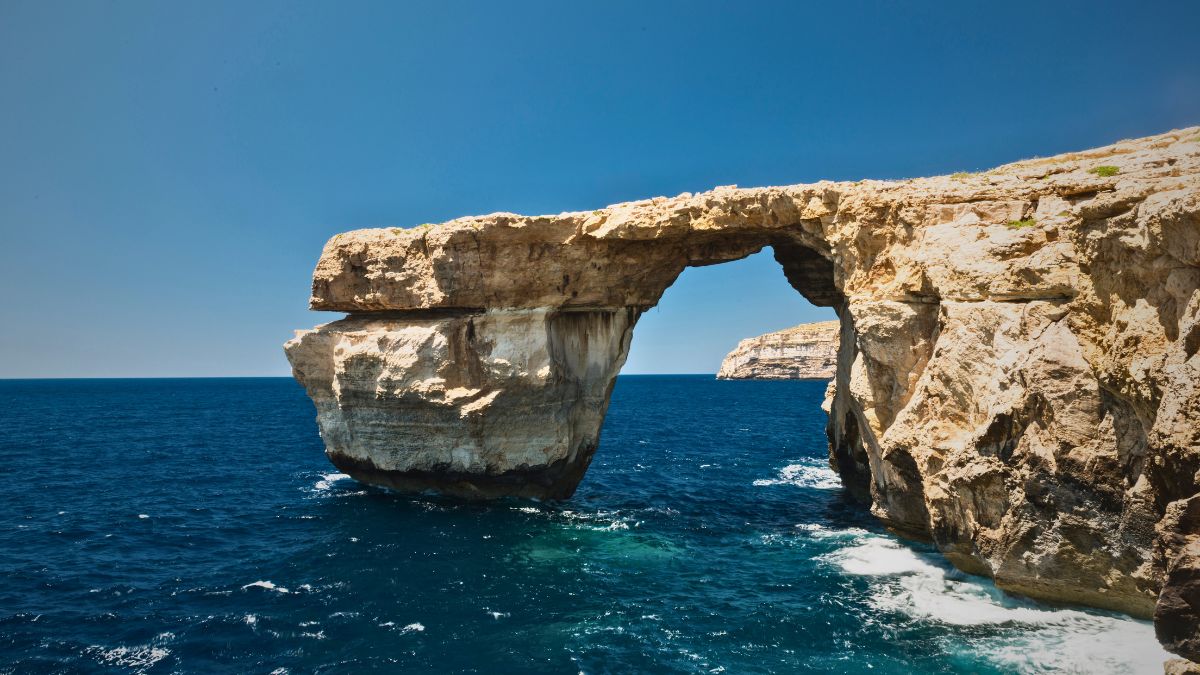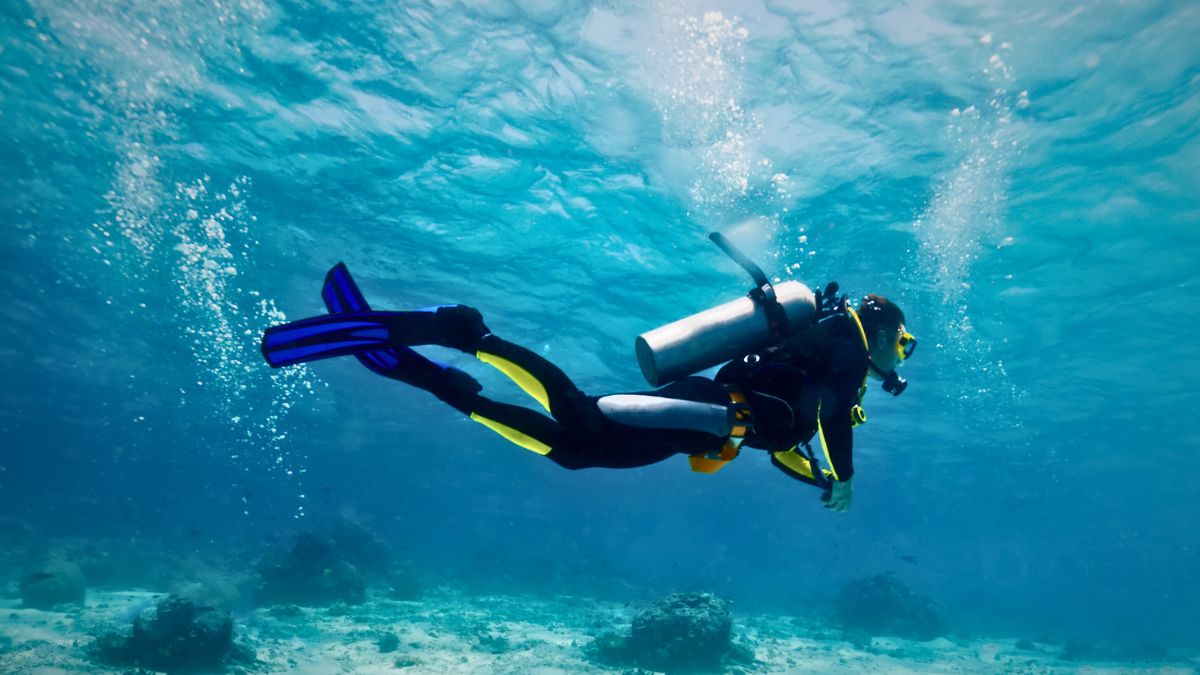Wreck diving is a very exciting type of diving and probably my favorite. In the seas and oceans you can find sunken ships or planes, while diving in lakes you can find various objects like a sunken car, bus, excavator or even a tank. How to start the adventure of wreck diving? Today I answer this topic.
It’s probably a natural human thing to be curious. And we’re especially curious about things that are difficult to explore, such as abandoned places or the sunken remains of ships and other objects. And while any certified diver can extend their certification to include wreck diving, this type of diving is not for everyone. Today we’ll talk about the advantages and dangers of diving on sunken wrecks.
What is wreck diving?
We can assume that the general definition of wreck diving will be diving on, viewing and exploring sunken objects of unnatural origin. This means that we are referring not only to shipwrecks, but any other object that has gone underwater as a result of human activity. Airplanes, tanks, cars or construction equipment are also great places for this type of diving.
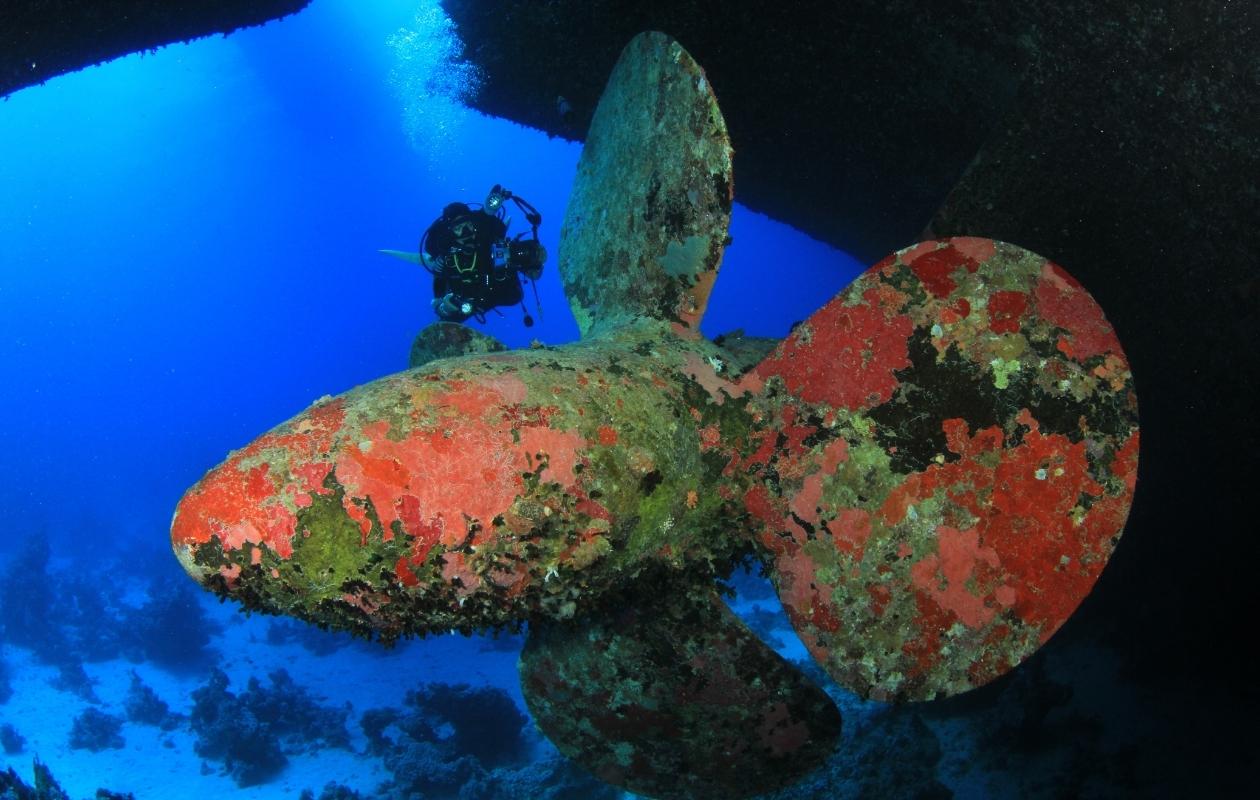
And while you certainly associate wreck diving with going inside and exploring tight passages, it doesn’t have to be that way at all. In fact, you don’t even have to go inside to enjoy the new experience of shipwreck diving. So how can we divide this type of diving?
Types of wreck diving
As I mentioned above, penetration of sunken wrecks does not always have to involve going inside them. To better understand the types of wreck diving, we can use this simple division:
Non Penetration Wreck Dive
Visiting sunken wrecks does not always have to mean going inside them. Such a basic type of wreck diving is viewing a sunken object from the outside. You can look through holes or windows, swim around, but you won’t penetrate inside during such a dive.
Limited Penetration Wreck Dive
We can call this type of diving a dive in which you go inside a sunken object, but remain in the light zone. This simply means that the areas you will penetrate will be sufficiently illuminated by natural light, plus the exit will always be visible. Here, however, you need to be careful with your head, because you will already be diving with something over your head. So a helmet can be useful…. Or excellent buoyancy 🙂
Full Penetration Wreck Dive
Ok now things are getting serious. Full penetration wreck diving is the exploration of sites deep in sunken objects and far beyond the “light zone”. Here you already need to have full wreck training, the right equipment and the skills to use it. It is necessary to mark the way out and carry a light source. Such a dive is very exciting, but also requires adequate preparation.
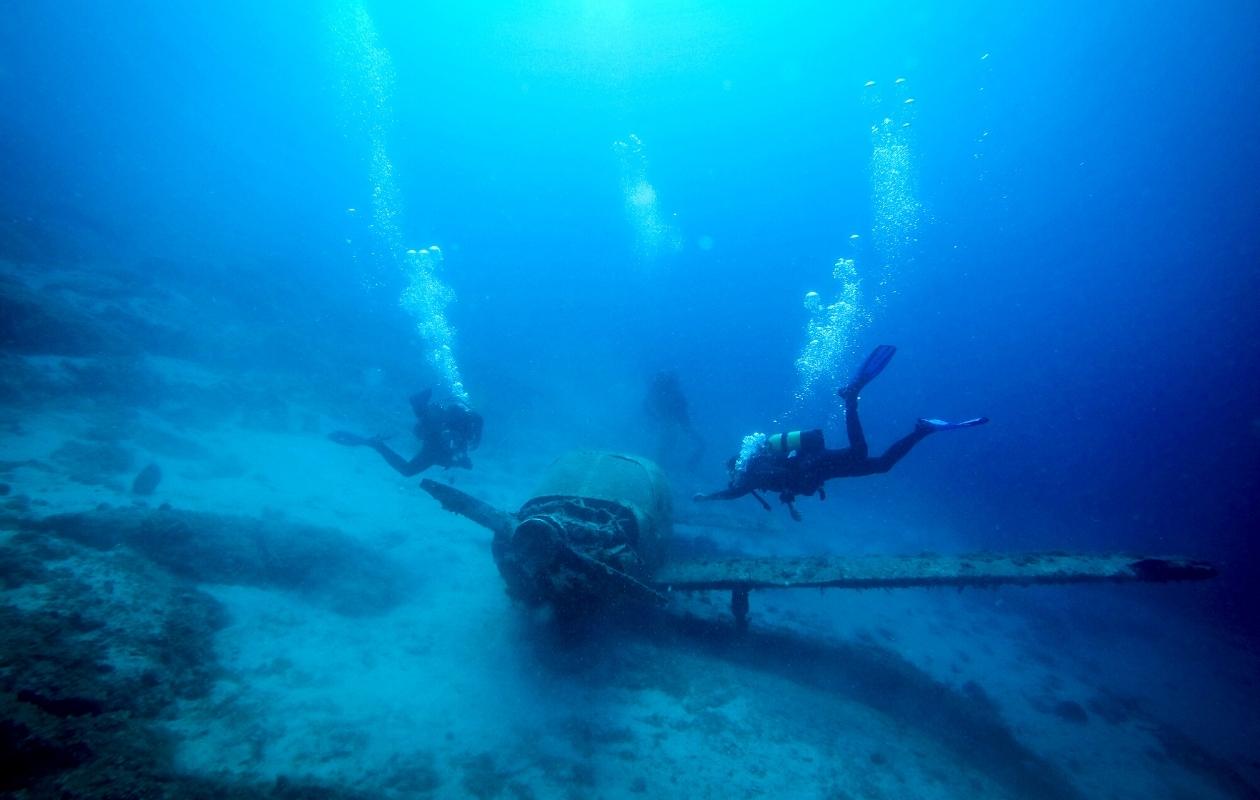
Safety rules for wreck diving
In general, diving is safe, but whenever entering any closed spaces, you must have additional knowledge and skills. Especially when diving on wrecks, you need to anticipate possible dangers and problems that may not occur during a “normal” dive. The most common hazards can be:
- Sharp objects – many wrecks have damaged parts that can be crumpled and torn. Often this is the result of the force that led to the sinking, and sometimes the action of the sea. When diving, be careful of all sharp items, as they can cause cuts and abrasions.
- Currents – strong currents can make penetrating a wreck difficult or impossible. Often reaching the wreck can be very difficult and tiring, causing you to use up your air faster. If there is a strong current on the wreck, you should definitely avoid going inside, as you do not know how stable the wreck itself is and what surprises await you inside.
- Poor visibility – reduced visibility can be generally dangerous. When you can’t see where you are, it’s easy to get lost or injured by sticking out parts of the structure. It should be emphasized that getting lost in an enclosed space is very dangerous and you should not go inside without training. When visibility is poor, it is best to end the dive and return another day.
- Unstable structures – due to their age, wrecks become increasingly unstable over time. Floors and ceilings collapse, walls weaken and bend. It is absolutely important to avoid wrecks whose condition may cause them to collapse or slip. Definitely avoid going under elements that can fall on you.
- Entanglement – various types of ropes, wires and cables can be found on wrecks. A diver can get entangled in all of them. The worst, however, are fisghing nets and getting entangled in them can be very dangerous. When diving, look carefully to avoid entanglement. However, if an entanglement does occur, stay calm and don’t struggle to avoid becoming even more entangled. In wreck diving, a knife or secateurs will be an essential piece of equipment. You will practice these types of emergency situations on a wreck diving course.
- Great depth – many attractive wrecks lie deep, often at depths of more than 40m. In order to dive at such depths, you need to be properly licensed and trained. You may need a deep diver’s license, or perhaps even technical diving skills. Remember that exceeding training limits is very dangerous and leads to problems.
Training for this type of diving
Wreck diving requires proper training and there are no shortcuts. Even if you are already an experienced open water diver, you will need additional training to penetrate wrecks. Just spend the few coins and take a good course from a good instructor, because knowledge is key.
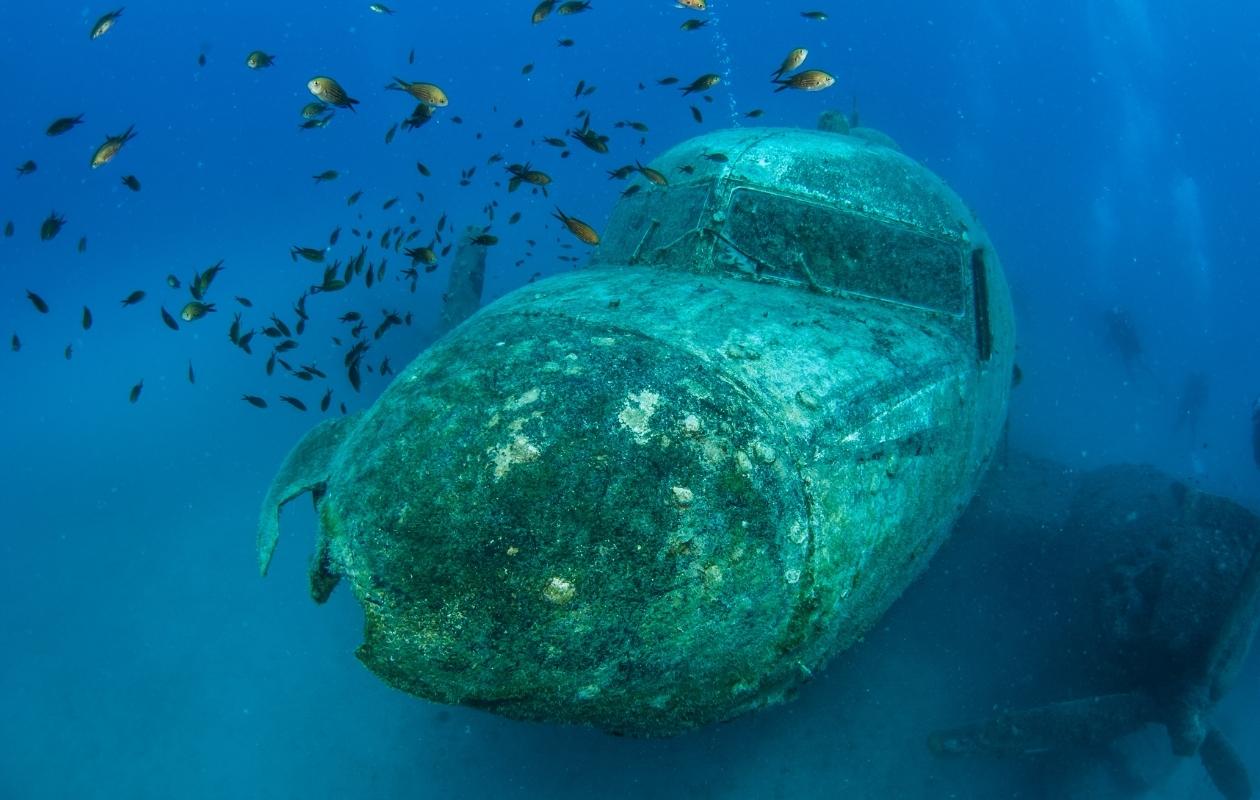
So, what are the prerequisites for someone dreaming of pentrating sunken wrecks? Actually, the requirements are not many. You must be at least 15 years of age and have an Adventure Diver level or better yet a PADI Advanced Open Water Diver. And this will already enable you to take the PADI Wreck Diver specialty course. Pretty simple, right?
Equipment for wreck diving
For wreck diving, you can use basic recreational diving equipment, i.e. a regular BCD, air cylinder, regulator, etc. However, it is worth knowing that there are additional pieces of equipment that you should take with you on a wreck dive. So what else should you bring with you?
- Reel – an essential item for wreck diving. The reel line allows you to mark the way back. The use of line and reel, the correct mounting and running of the line are among the basic skills you will learn in the course.
- Knife or secateurs – as I mentioned above, this is an essential item for your safety during wreck exploration. In case of entanglement, it allows you to cut away and free yourself. It is common in technical diving to take two cutting tools with you, and I recommend this habit in wreck diving as well.
- Helmet – a helmet is a good option not only in caves, but also on wrecks, it protects your head perfectly and allows you to install lights or a camera. However, before you take your old bicycle helmet on a dive, check that it does not interfere with the wearing of a diving mask or other equipment….
- Lighting – I must say that having a flashlight with you on every dive is a good habit. In night diving, having a good light source is rather obvious. It is no different in the exploration of sunken things. Here, too, I recommend having a minimum of two independent sources of lighting.
Why is wreck diving worth it?
The answer to this question can only be my personal one, because not everyone has to agree with me. Just as not everyone has to be interested in wreck diving. However, for me personally, penetrating and discovering sunken relics of the past is a living history lesson. It’s an opportunity to see something that was once lived by dozens, if not hundreds of people. Something that was created with no small amount of effort to fulfill its purpose.
Remnants of war, ships sunk by storms, or downed planes. All of this adds a unique flavor to diving, which, for me personally, not even the most beautiful coral reef can express. Add a touch of mystery and the chance to discover something yet undiscovered. Sunken gold bars, a chest of documents or a ship’s cannon buried in the sea sand…. And although I have dived in many beautiful places around the world, I will always choose wreck diving over any other. But as I said… that’s just me…
Wrecks as artificial coral reefs
Sunken wrecks have not always gone underwater as a result of accident or warfare. Many of the newer wrecks have been specially prepared and sunk to create a new dive site. Of course, permits and local government support are needed to sink such a object. But proper preparation is also necessary. All oil, fuel and other toxic substances must be removed.
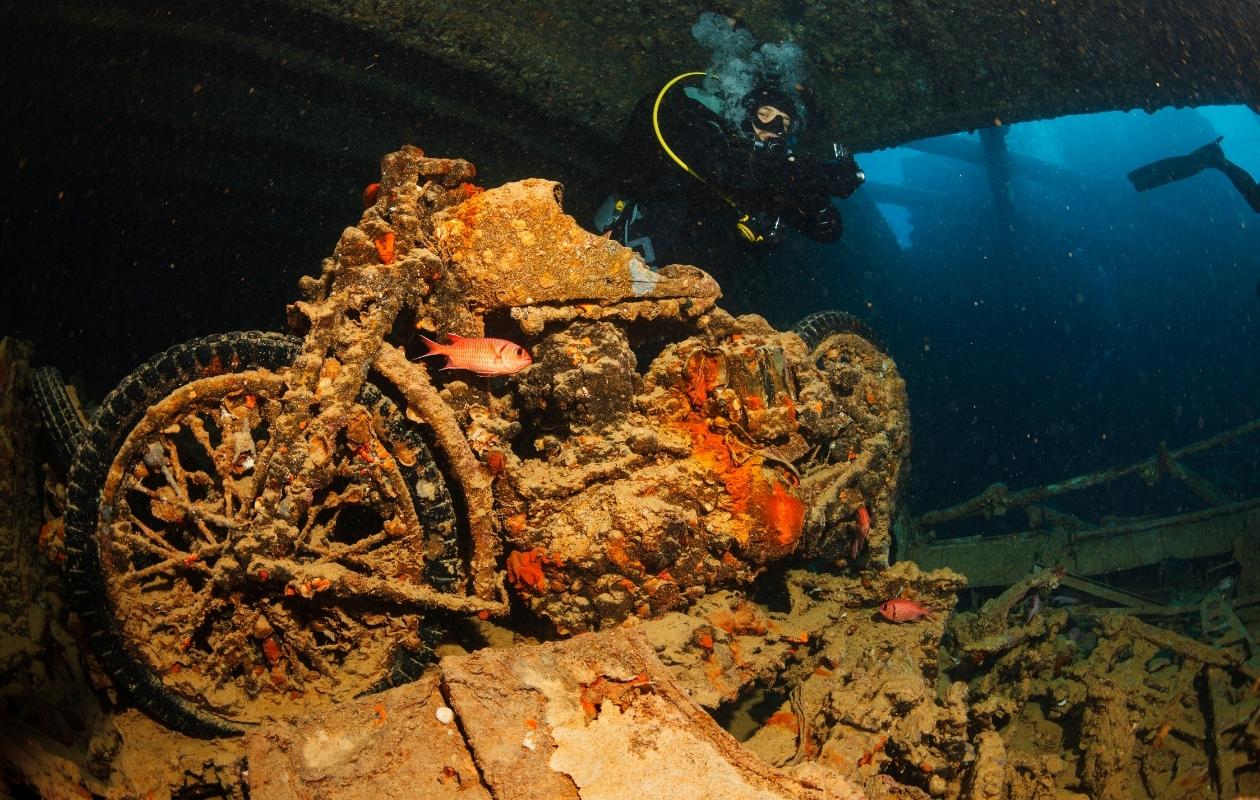
In addition, the wreck must be cleaned of all elements that, over time, can pose a threat to divers and nature. And this is the added advantage of artificially sinking wrecks, as they can create a base for coral growth or a habitat for fish. Especially in areas that have suffered from climate change, such projects are a very good idea.
Wreck diving – let’s recap
Let’s summarize this long essay on wreck diving. Is it worth it? Oh boy, it’s worth it, and very much so! Nothing can describe the excitement when you swim and finally begin to see the delicate outline, and then more and more clearly the great sunken ship.
I also can’t describe what you feel when you dive along the staircase that people used to walk. Wreck diving is number one for me. Ex aequo with cave diving. But that’s a topic for another story….
Lastly, I want to add one thing. No wreck, even the most beautiful, is worth dying for. Do not dive without proper training.

